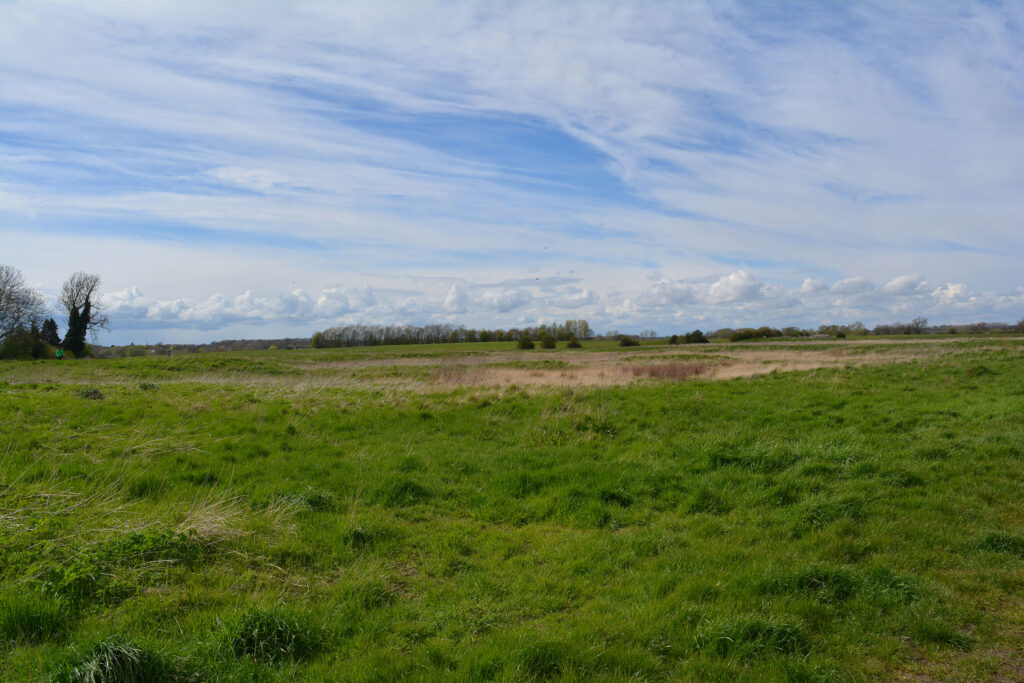War and peace in Newport Pagnell’s famous green space
Posted 5th May 2019
To the dog walkers who use the green expanse to exercise their pets, Bury Field is a tranquil, wide open space. But Bury Field has a rich history, and it has been at the heart of life in Newport Pagnell for a millennium. During that time, it has been utilised for mass burials, been used by courting couples and grazing livestock, commandeered for the war effort, and much, much more.
Bury Field’s name came from the word Burh, and it is believed that the space was given over to agriculture from the ninth century – traces of ridge and furrow are still visible today.
English Civil War
When the Parliamentarians (Roundheads) and Royalists (Cavaliers) declared war in 1642, the Royalists realised the strategic importance of the town, and on October 6 it was captured by The Royalists, led by Sir Lewis Dyves from Bromham Hall. Just 20 days later, Parliamentary forces re-took Newport while the Royalists were in Stony Stratford!
In the summer of 1644, around 1200 foot soldiers were in the town, and Oliver Cromwell’s son, sent by his father who placed great importance on the town’s garrison, was in situ.
His remains are believed buried in an unmarked grave, with both Newport Pagnell and Sherington claiming ownership. Today, it seems unlikely we will ever be able to confirm his final resting place. However, we do know that he died aged just 21, in March 1644, and smallpox was recorded as the cause.
The same year, a non-conformist from Elstow, Bedford, arrived to join up. His name was John Bunyan, and he would later write the Pilgrim’s Progress, regarded as one of the most significant works of religious English literature.
The book was written in 1678 and has never been out of print.
More than 370 years since parliament instructed the demolition of the defences, remains of some of the wall and ditch are still visible today – one of only a small number of places in the country where this type of earthworks can be seen.
In 2016, the town marked the 375th anniversary of the Civil War with a large scale re-enactment. Canons fired and more than 550 members of the English Civil War society went to battle.
A burial place
There is every probability that the town suffered the ravages of the Black Death which raged in England between 1348 and 1350, but we know for certain that the Great Plague attacked Newport Pagnell in 1666.
While fire ravaged London, the disease spread to rural areas, with devastating consequences. The hot summer made the situation worse.
The bubonic plague was brutal; those struck down had a 30% chance of meeting their end within just two weeks and registered burials in the area rose from 37 in 1665, to 697 the following year.
Bury Field is believed to be the final resting place for many of the victims, who would have been disposed of in haste, buried in just a shroud.
Samuel Pepys visited the town in 1668, when the disease had passed, but he found a place stricken in number following the devastation: ‘At night to Newport Pagnell; and there a good pleasant country-town, but few people in it,’ he recorded of his overnight stay.
While no-one knows for sure where the final resting place of those poor folks is on the common, one ancient burial site would still be visible today, were it not for an over-enthusiastic worker during the Second World War.
The Bronze Age monument was known locally as the ‘fairy ring’ and was scheduled to be preserved forever, but it was razed – ploughed up and levelled when the land was requisitioned for the war effort.
A sporting hub
Galloping hooves sounded on the field from the early 1700s as races entertained crowds, and booths offered sideshows and entertainments. Petty criminals and pick-pockets flocked to the field too, eager to ‘make’ a pretty penny.
Races remained a popular attraction for many a year, but the last race meeting was held in 1876.
Willow on leather was the sound between 1864 and 1870 with a number of top-class cricket matches played, and football was another popular pastime – Newport Wanderers used Bury Field as their base until around 50 years ago.
Off the beaten track
In Victorian times, an exciting new era brought innovation, and a train line was set to extend the Wolverton to Newport line, taking it through Bury Field and on to Olney.
London and North Western Railway opened the Wolverton to Newport link in 1867, but a lack of finance put paid to the Olney extension, even though a large sum of money had already been spent on earthworks.
The tracks were never laid and the venture was abandoned in 1871. n
To learn more about the rich history of Bury Field, including its role in the First and Second World War, tragedies and triumphs, ownership and rights, and right Royal celebrations, read ‘Bury Field – A Thousand Years of History’ available through Amazon, at Emporium 38 in Newport Pagnell or direct from the publisher at: www.WordGo.org.uk
